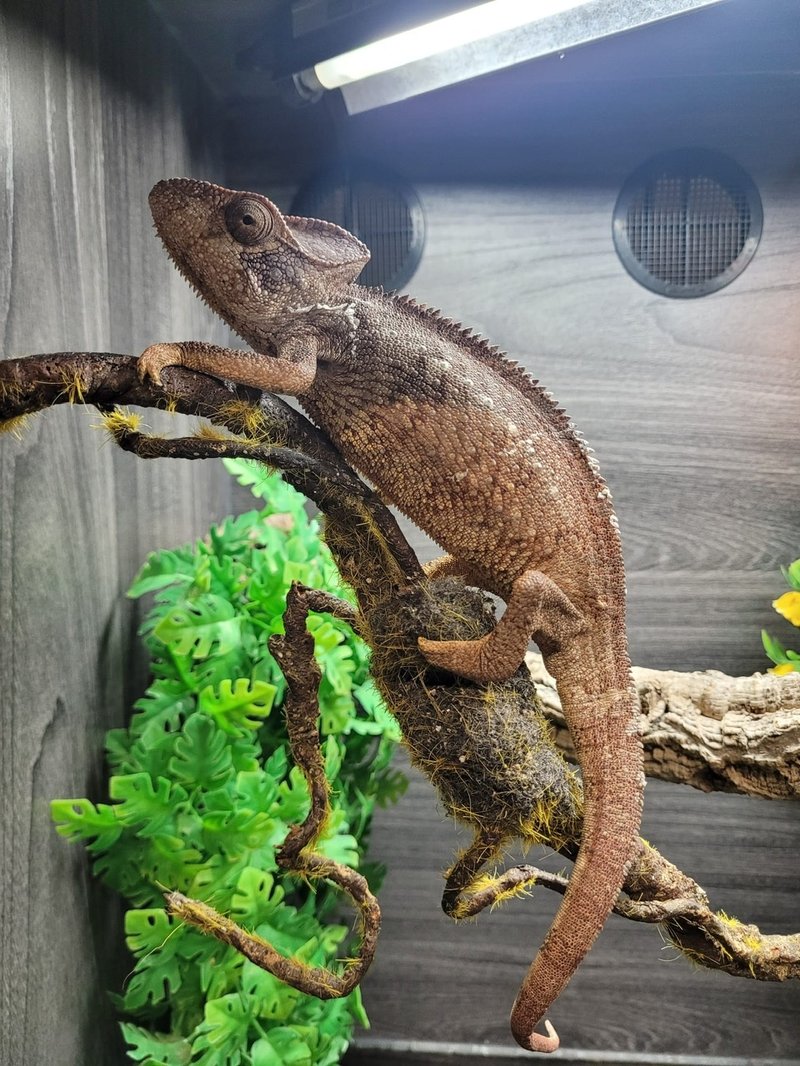
You might be asking yourself, “Why does it even matter if my Oustalet’s chameleon gets along with others?” Well, understanding their temperament is crucial if you plan to house multiple reptiles. It can help prevent stress and potential aggression. So, let’s explore how these colorful chameleons interact with other reptiles and what you need to know if you’re considering having them share a habitat.
Understanding Oustalet’s Chameleons
Oustalet’s chameleons, also known as *Furchen’s chameleon*, are known for their impressive size and striking colors. These chameleons can grow up to 30 inches long, making them one of the largest chameleon species. Their vibrant hues can change based on their mood, temperature, or environment, which adds an extra layer of intrigue to their personalities.
These chameleons are primarily solitary creatures. In the wild, they tend to roam their territory alone, marking it with their presence. This natural tendency means they’re not particularly social, especially with other reptiles. Imagine them as introverts at a social gathering, preferring to keep to themselves rather than mingling with the crowd.
Temperament plays a significant role in their interactions with other reptiles. If you’re planning to house them with other species, it’s important to recognize their typically solitary nature. They might not take kindly to company—especially if it’s another reptile encroaching on their space.
Compatibility with Other Reptiles
You might be wondering, “Can I keep my Oustalet’s chameleon with other reptiles?” The short answer is that it’s generally not recommended. These chameleons don’t naturally coexist with other reptiles, and introducing them to different species can lead to stress or aggression.
There are a few reasons behind this. First, Oustalet’s chameleons can be territorial. If another reptile moves into their space, they might view it as a threat. This can lead to confrontations that could injure either animal. Second, different reptiles often have varying habitat needs. For instance, while some reptiles thrive in high humidity, others prefer dry conditions. Failing to meet these requirements can be harmful to both species.
If you’re considering adding another reptile to your collection, it’s essential to choose a species that shares similar habitat needs and temperaments. Still, the safest bet is to keep your Oustalet’s chameleon in their own space.
Signs of Stress in Oustalet’s Chameleons
If your Oustalet’s chameleon is placed in a habitat with other reptiles, watch for signs of stress. These can include changes in behavior, which could indicate they’re not handling the situation well.
Here are some common signs:
- Color changes: While chameleons do change colors naturally, excessive darkening can indicate stress.
- Hiding: If your chameleon is frequently hiding or avoiding other reptiles, they might feel threatened.
- Reduced appetite: A stressed chameleon may stop eating, which can lead to health issues.
Being aware of these signs can help you respond quickly if your chameleon feels uncomfortable. If you notice any of these behaviors, it may be wise to separate them from other reptiles to avoid further stress.
Creating the Right Environment
If you decide to keep an Oustalet’s chameleon, or if you already have one, ensuring a suitable environment is key. These reptiles thrive in specific conditions that cater to their needs.
Start with a properly sized terrarium. Oustalet’s chameleons require height to climb and explore. A tall enclosure that mimics their natural habitat—full of branches and foliage—is ideal.
Also, pay attention to temperature and humidity. These chameleons prefer a temperature range between 75°F to 85°F during the day, with a cooler area for them to retreat to. Humidity should be kept around 60%–70%.
Here’s a quick checklist for setting up their habitat:
- Branches and vines: Provide plenty of climbing space.
- Live plants: Incorporate plants for hiding and humidity.
- Heat lamp: Ensure they have a basking spot that meets their temperature needs.
By creating a comfortable environment, you can help your chameleon feel secure, reducing stress and promoting a healthier life.
Alternative Companionship Options
If you’re keen on having reptiles in your home but worried about compatibility with Oustalet’s chameleons, consider alternative options. Some reptiles can coexist peacefully, especially when housed correctly.
For example, many pet owners successfully keep different species of snakes or lizards together if they have similar temperature and humidity needs. However, it is crucial to research each species thoroughly to ensure compatibility.
You could also look into keeping Oustalet’s chameleon as a single pet. They can be captivating to watch and provide a lot of personality on their own. Sometimes, giving a reptile the space they naturally prefer leads to a more fulfilling pet experience for both of you.
Final Thoughts on Keeping Oustalet’s Chameleons
In conclusion, while Oustalet’s chameleons are stunning creatures with unique characteristics, they are best kept alone. Their solitary nature means they aren’t typically suited for communal living with other reptiles.
If you decide to house them with other reptiles, you’ll need to carefully consider compatibility and monitor for signs of stress. It’s all about creating a comfortable, suitable environment for your chameleon, allowing them to thrive.
Remember, keeping reptiles can be immensely rewarding, but understanding their behavior and needs is essential. By investing time and care, you’re setting the stage for a happy, healthy pet experience—much like hosting that dinner party where everyone gets along just fine.

